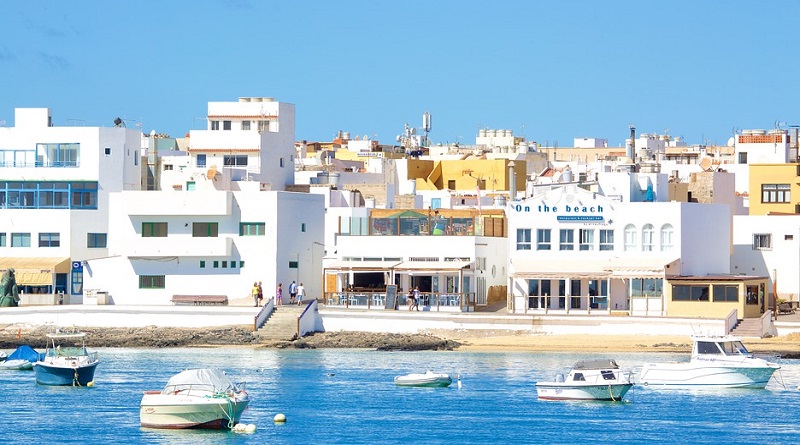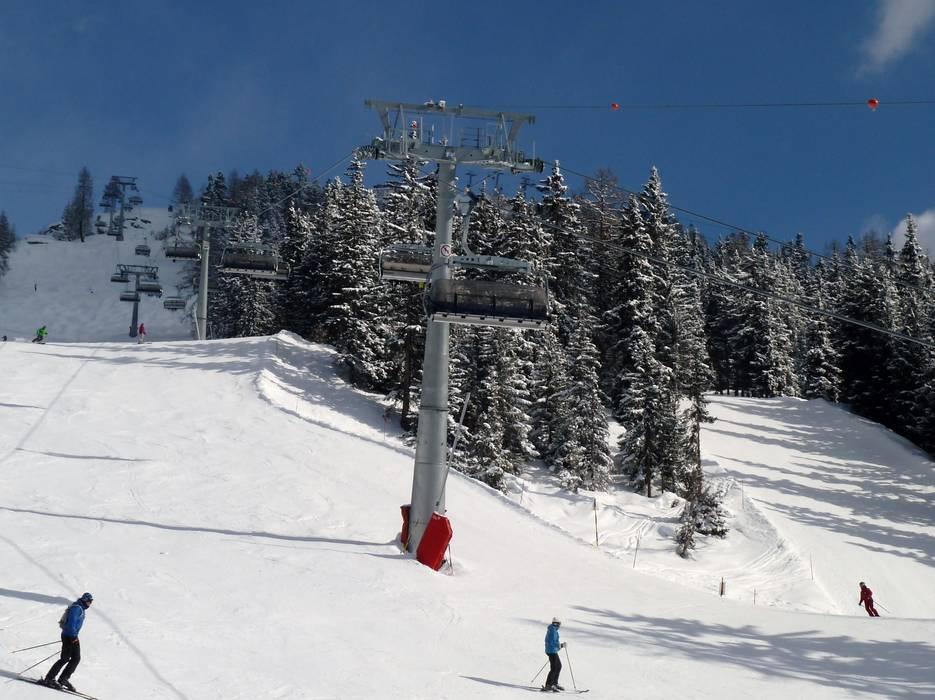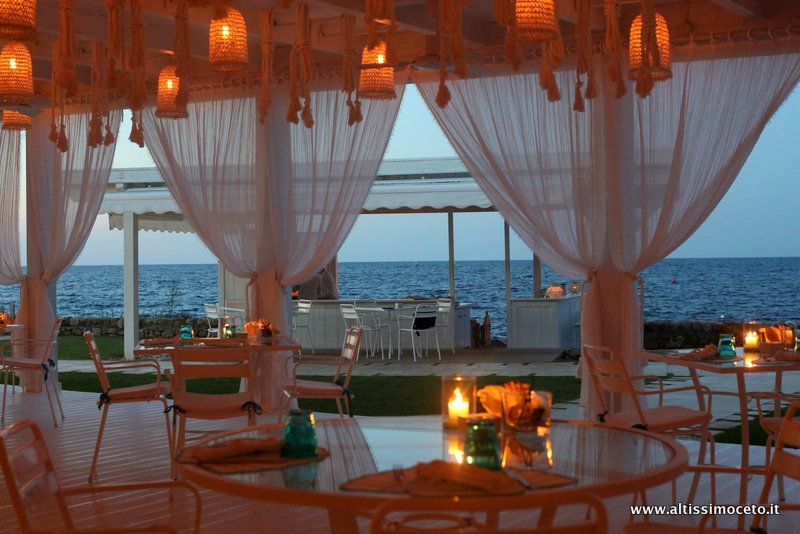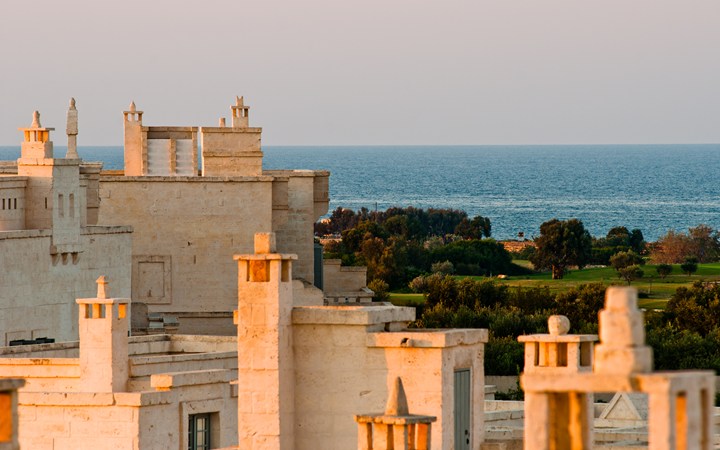Come vivere il sogno di un viaggio americano? Con un pizzico di italianità che dona lo stile giusto.Tra i sogni ad occhi aperti dei viaggiatori, una fuga verso sconfinati spazi aperti occupa sicuramente un posto d’onore in questo periodo. Grazie al crescente desiderio di contatto con la natura, paesaggi incontaminati e vacanze attive, gli itinerari meno battuti e le proposte di alloggi alternativi sono destinati a diventare sempre più popolari.Una delle tendenze più in voga del momento è il glamping, che si sta affermando come soluzione difascia alta dove non mancano una buona dose di avventura e il contatto con la natura. Aziende delsettore come Aman e Under Canvas, tra il 2020 e il 2021 si espanderanno sempre di più per offrirearee campeggio ancora più chic.Autocamp, che offre lussuosi rifugi negli iconici caravan Airstreams, aprirà il suo primo sito al di fuori della California con l’Autocamp Cape Cod, a partire dalla primavera 2021. Nel frattempo, l’offerta di alloggi eccentrici di Airbnb negli Stati Uniti continua a crescere, dalle case sull’albero all’aperto fino alle “Gully Huts” dallo stile più underground.Per chi è alla ricerca di alternative ai classici alberghi, gli Stati Uniti offrono un grande ventaglio diopzioni: ecco alcune proposte molto originali per immergersi completamente nella natura e nella maestosità dei paesaggi americani. 
Camp Sarika by Aman, Utah (apertura nell’estate 2020)
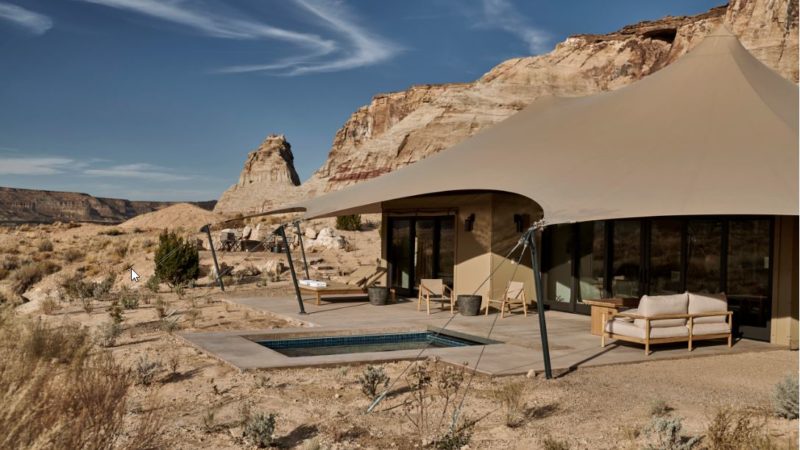 A poca distanza da Amangiri, raggiungibile sia in macchina che con una escursione, Camp Sarika è separato dal resto del mondo. Un luogo remoto contraddistinto da un profondo legame con la natura che lo circonda, per concedersi una fuga dalla vita frenetica della città. La struttura offreun ristorante, una piscina principale, una lounge e un paio di spa suite, tutti elementi che rendono Camp Sarika un rifugio completamente indipendente. Il campo è immerso in un paesaggio ultraterreno, circondato da 600 acri di imponenti mesa, canyon e sabbia color ruggine. Il campo tendato regala un'esperienza intima e selvaggia nel cuore del deserto, a poca distanza da cinque parchi nazionali e dalla riserva nazionale Navajo. Un luogo unico, che rappresenta un punto di ingresso alternativo nelle terre selvagge del Vecchio West.
A poca distanza da Amangiri, raggiungibile sia in macchina che con una escursione, Camp Sarika è separato dal resto del mondo. Un luogo remoto contraddistinto da un profondo legame con la natura che lo circonda, per concedersi una fuga dalla vita frenetica della città. La struttura offreun ristorante, una piscina principale, una lounge e un paio di spa suite, tutti elementi che rendono Camp Sarika un rifugio completamente indipendente. Il campo è immerso in un paesaggio ultraterreno, circondato da 600 acri di imponenti mesa, canyon e sabbia color ruggine. Il campo tendato regala un'esperienza intima e selvaggia nel cuore del deserto, a poca distanza da cinque parchi nazionali e dalla riserva nazionale Navajo. Un luogo unico, che rappresenta un punto di ingresso alternativo nelle terre selvagge del Vecchio West.
Under Canvas, Tuolumne County, California (apertura 2020, TBC)
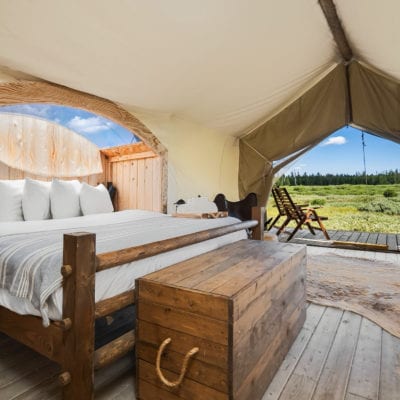 Under Canvas, società specializzata in lussuosi alloggi in stile safari nei parchi nazionali americani, nel 2020 si prepara ad inaugurare la prima località di glamping nella zona di Yosemite. Situato a sole due ore e mezzo di macchina a est della baia di San Francisco e a 20 minuti dall’ingresso del Parco Nazionale di Yosemite, il sito di glamping si erge su un’area di 85 acri tra alberi di sequoia e prati sconfinati. La location nella Contea di Tuolumne offrirà 90 tende in stile safari e aree lounge tendate, rappresentando la scelta perfetta per i viaggiatori avventurosi che desiderano esplorare i luoghi imperdibili di Glacier Point, Half Dome ed El Capitan.
Under Canvas, società specializzata in lussuosi alloggi in stile safari nei parchi nazionali americani, nel 2020 si prepara ad inaugurare la prima località di glamping nella zona di Yosemite. Situato a sole due ore e mezzo di macchina a est della baia di San Francisco e a 20 minuti dall’ingresso del Parco Nazionale di Yosemite, il sito di glamping si erge su un’area di 85 acri tra alberi di sequoia e prati sconfinati. La location nella Contea di Tuolumne offrirà 90 tende in stile safari e aree lounge tendate, rappresentando la scelta perfetta per i viaggiatori avventurosi che desiderano esplorare i luoghi imperdibili di Glacier Point, Half Dome ed El Capitan.
Airbnb Treehouse Canopy Room, Permaculture Farm, Miami, Florida
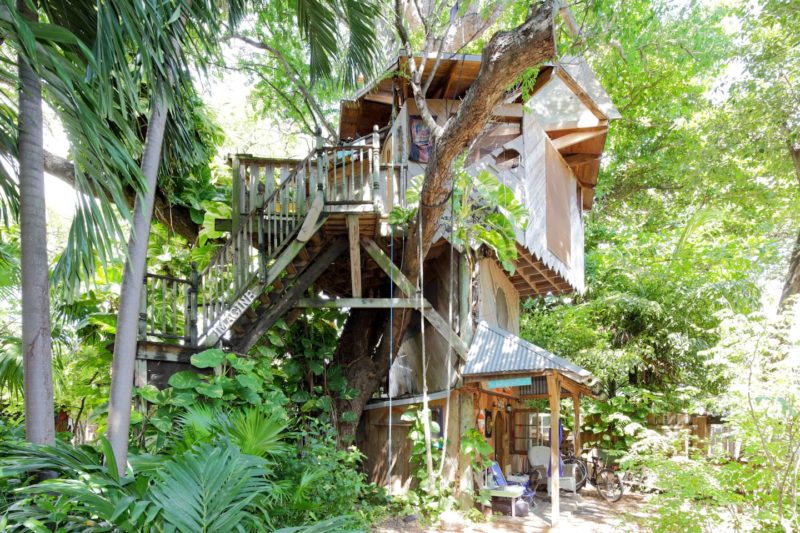 Grazie alla luce delicata e alle fronde degli alberi che offrono l’ombra perfetta per rinfrescarsi dal caldo di Miami, questa casa sull’albero offre agli ospiti un’esperienza di autentico relax in un ambiente che ricorda quello di un’isola lontana, senza muoversi dal quartiere di Little Haiti. Circondati da capre, maiali, emù, galli e gatti, gli ospiti si sentiranno come trasportati in campagna. Per raggiungere l’alloggio all’interno di questa oasi urbana è necessario arrampicarsi lungo la stretta scala fino al terzo piano della casa, costruita tra i rami di un albero di Pithecellobium, dove si trova anche un bagno all’aperto in stile BahamasDixie Daisy Airstream, Hill Country, Texas
Grazie alla luce delicata e alle fronde degli alberi che offrono l’ombra perfetta per rinfrescarsi dal caldo di Miami, questa casa sull’albero offre agli ospiti un’esperienza di autentico relax in un ambiente che ricorda quello di un’isola lontana, senza muoversi dal quartiere di Little Haiti. Circondati da capre, maiali, emù, galli e gatti, gli ospiti si sentiranno come trasportati in campagna. Per raggiungere l’alloggio all’interno di questa oasi urbana è necessario arrampicarsi lungo la stretta scala fino al terzo piano della casa, costruita tra i rami di un albero di Pithecellobium, dove si trova anche un bagno all’aperto in stile BahamasDixie Daisy Airstream, Hill Country, Texas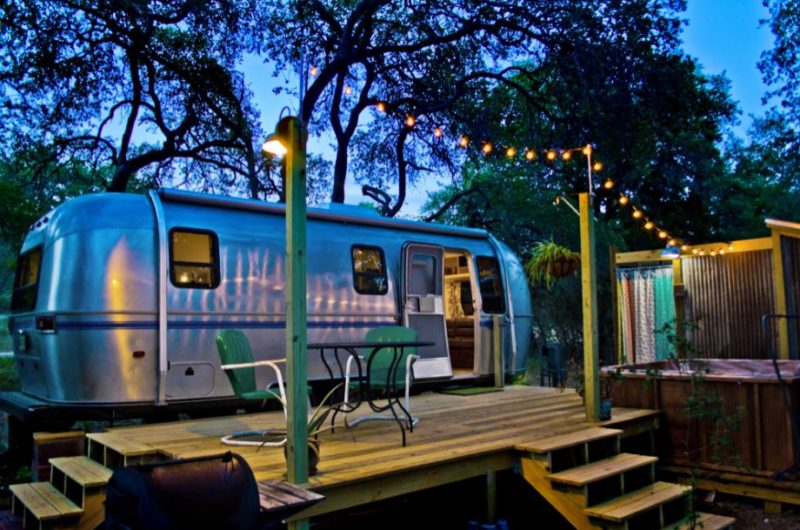 Tende a tema cowgirl, piastrelle luminose e pareti giallo brillante fanno da cornice a questo Airstream dallo stile retrò, immerso tra centinaia di olmi a Smith Creek, nel cuore del Texas Hill Country. È il luogo perfetto per fare una doccia all’aperto, brindare in gruppo intorno ad un falò o rilassarsi nelle vasche idromassaggio sotto le scintillanti lucine della sera. Inoltre, il segnale telefonico non è sempre garantito, quindi gli ospiti possono davvero sfruttare la posizione remota per andare “offline” e godersi il panorama stupendo fatto di colline, insenature, bagni e percorsi naturalistici che offrono un detox perfetto dalla vita frenetica. Il vicino Pedernales Falls State Park è ideale per una nuotata o un’escursione all’aperto.The Resort at Paws Up, Blackfoot Valley, Montana
Tende a tema cowgirl, piastrelle luminose e pareti giallo brillante fanno da cornice a questo Airstream dallo stile retrò, immerso tra centinaia di olmi a Smith Creek, nel cuore del Texas Hill Country. È il luogo perfetto per fare una doccia all’aperto, brindare in gruppo intorno ad un falò o rilassarsi nelle vasche idromassaggio sotto le scintillanti lucine della sera. Inoltre, il segnale telefonico non è sempre garantito, quindi gli ospiti possono davvero sfruttare la posizione remota per andare “offline” e godersi il panorama stupendo fatto di colline, insenature, bagni e percorsi naturalistici che offrono un detox perfetto dalla vita frenetica. Il vicino Pedernales Falls State Park è ideale per una nuotata o un’escursione all’aperto.The Resort at Paws Up, Blackfoot Valley, Montana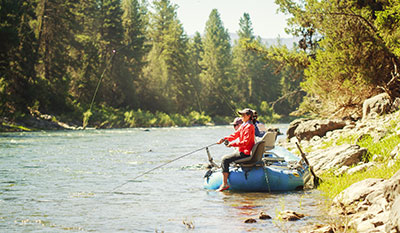 I viaggiatori possono sperimentare la vita dei cowboy nelle pianure del Montana, negli Stati Uniti nord-occidentali, al Resort at Paws Up. Gli ospiti possono prenotare una delle capanne di legno di questa tenuta di ben 37.000 acri, con ranch in attività, ma sono le tende spaziose e appartate i posti più speciali in cui soggiornare. La scelta è tra quelle arroccate sul bordo di una scogliera, con vista sul turbinoso fiume Blackfoot (che per dieci miglia scorre attraverso la proprietà) ed Elk Creek, circondato da alberi imponenti. Gli interni sono in stile western-chic, con giroletti in legno, stampe vivaci e vasche da bagno in rame, che donano quel tocco di lusso anche alla vacanza in campeggio. Nella sezione privata del ranch, sono presenti delle tende di glamping con vista su prati e montagne. Il luogo ospita inoltre numerosi workshop sulla natura selvaggia che spaziano da lezioni di pittura e sessioni di fotografia del cielo, a pesca con la mosca, escursioni e passeggiate a cavallo. Da qui è possibile esplorare la regione del fiume Blackfoot, passeggiando tra le foreste di conifere e lungo pianure vuote, ammirando gli splendidi paesaggi della natura selvaggia del Montana
I viaggiatori possono sperimentare la vita dei cowboy nelle pianure del Montana, negli Stati Uniti nord-occidentali, al Resort at Paws Up. Gli ospiti possono prenotare una delle capanne di legno di questa tenuta di ben 37.000 acri, con ranch in attività, ma sono le tende spaziose e appartate i posti più speciali in cui soggiornare. La scelta è tra quelle arroccate sul bordo di una scogliera, con vista sul turbinoso fiume Blackfoot (che per dieci miglia scorre attraverso la proprietà) ed Elk Creek, circondato da alberi imponenti. Gli interni sono in stile western-chic, con giroletti in legno, stampe vivaci e vasche da bagno in rame, che donano quel tocco di lusso anche alla vacanza in campeggio. Nella sezione privata del ranch, sono presenti delle tende di glamping con vista su prati e montagne. Il luogo ospita inoltre numerosi workshop sulla natura selvaggia che spaziano da lezioni di pittura e sessioni di fotografia del cielo, a pesca con la mosca, escursioni e passeggiate a cavallo. Da qui è possibile esplorare la regione del fiume Blackfoot, passeggiando tra le foreste di conifere e lungo pianure vuote, ammirando gli splendidi paesaggi della natura selvaggia del Montana
Gli stili giusti per le avventure americane:
“The best of you”
 Avventurose e pronte a tutto, si, ma con femminilità!
Avventurose e pronte a tutto, si, ma con femminilità!
Triumph inaugura la stagione Autunno/Inverno 2020-21 con un claim di empowerment tutto al femminile: “The best of you”, un messaggio che invita le donne ad esaltare sempre la versione migliore di se stesse partendo dalla scelta della lingerie. Madrina di questo messaggio è l’iconica linea Amourette, dedicata a donne dinamiche ed indipendenti che puntano sulla lingerie per sentirsi femminili e a proprio agio in ogni situazione.
Amourette Charm, leggero, setoso ed invisibile sotto i vestiti, propone una serie di completi moderna e ricercata, l’ideale per le silhouette femminili. Must-have di stagione è il reggiseno sfoderato interamente che valorizza il décolleté in modo naturale. Realizzato in pizzo elasticizzato si abbina al seducente slip modello brasiliana dalla copertura minima.

Trending Now for Nature

I nuovi capi della collezione Mango raccontano una storia in cui oltre alla natura, al divertimento e al relax, anche i pezzi casual sono al centro della scena. Dai tessuti fluidi, trasparenti e satinati alle stampe spot e ai dettagli decorativi. Questa è una selezione di modelli ampi e creazioni facili da indossare perfette per vivere il presente e godersi un weekend nel nuovo continente.
FLAPPER Collezione Resort hair-dress
 Calza a pennello per i nostri viaggi avventurosi questa collezione dalla femminilità leggera e aggraziata. Dall’altro lato, rigore e ricerca di uno stile trasformista. La pre-collezione SS21 di Flapper ha una doppia natura. Mostrarsi e distinguersi ma anche coprirsi e proteggersi. In condizioni di meteo avverso come di vulnerabilità.
Calza a pennello per i nostri viaggi avventurosi questa collezione dalla femminilità leggera e aggraziata. Dall’altro lato, rigore e ricerca di uno stile trasformista. La pre-collezione SS21 di Flapper ha una doppia natura. Mostrarsi e distinguersi ma anche coprirsi e proteggersi. In condizioni di meteo avverso come di vulnerabilità.
Forme e geometrie mutano per vestire ogni tipo di diversità, estetica e culturale. La funzionalità incontra una nuova dimensione poetica e femminile.Pronti a tutto, i modelli ultraleggeri in nylon waterproof. E poi Trisha, cloche con lunga falda posteriore asimmetrica, spicca la forma allungata dotata di taschine del cappello Paloma, il nuovo modello di punta.Onirico, lo shantung. La classica seta grezza è qui proposta in versione tech, rigida e modellabile. La palette siderale dà una forte sofisticazione anche al più semplice degli accessori. Come Ginger, elastico con gonnella , sempre più c’è l’intenzione al vestire i capelli (non solo headdress quindi, ma hair-dress).
In Beauty
 HOLIDAY KIT by Susanne Kaufmann : I formati travel di alcuni tra i prodotti più amati del brand skincare racchiusi in un inedito kit ideale per il nostro viaggio americano.In formato travel, prodotti idratanti, rigeneranti e per proteggersi dal sole. Analogamente a tutte le referenze del brand skincare, sono formulati e prodotti nelle Alpi austriache avvalendosi dei più efficaci attivi botanici.Perfetto per essere portato con sé in vacanza , Susanne Kaufmann Holiday Kit include infatti le praticissime travel size di prodotti che idratano e rinnovano la pelle dopo l’esposizione al sole, così come uno spray antibatterico per le mani, la cui azione detergente non lede l’idratazione delle estremità. In particolare il kit comprende:Moisturizing Mask. Maschera idratante dalla texture ultra piacevole, nutre la pelle grazie alla presenza dell’olio di nocciola e dell’estratto di viola del pensiero. La pelle appare ridefinita, la freschezza è ripristinata.Lip Balm. Oli e cere vegetali nutrono e proteggono le labbra a lungo.Hand Spray Purif-i sanitizing. Spray che rimuove i germi dalle mani grazie all’alcol vegetale, mentre principi attivi derivanti da arnica e dalle proteine della seta nutrono la pelle.Body Broad Spectrum Protection Sunscreen SPF 25. Crema solare protettiva per il corpo. Rinforza la barriera protettiva naturale della pelle ed è waterproof. La formulazione idrata intensamente e apporta un nutrimento longlasting.After Sun Gel moisturizing. Gel doposole che contiene l’innovatico complesso di acido ialuronico CUBE³, dall’intensa azione idratante. L’aloe vera protegge dai danni causati dai fattori ambientali e ha un effetto rinfrescante e lenitivo sulle scottature solari.Rose Water Mist. Spray rinfrescante per il viso, vera e propria fonte di freschezza ogniqualvolta se ne senta l’esigenza. Ha un effetto antiossidante e lenitivo, donando al contempo alla pelle un aspetto sano e riposato. Il delicato profumo di rosa aggiunge piacevolezza ulteriore per il corpo e per l’anima.
HOLIDAY KIT by Susanne Kaufmann : I formati travel di alcuni tra i prodotti più amati del brand skincare racchiusi in un inedito kit ideale per il nostro viaggio americano.In formato travel, prodotti idratanti, rigeneranti e per proteggersi dal sole. Analogamente a tutte le referenze del brand skincare, sono formulati e prodotti nelle Alpi austriache avvalendosi dei più efficaci attivi botanici.Perfetto per essere portato con sé in vacanza , Susanne Kaufmann Holiday Kit include infatti le praticissime travel size di prodotti che idratano e rinnovano la pelle dopo l’esposizione al sole, così come uno spray antibatterico per le mani, la cui azione detergente non lede l’idratazione delle estremità. In particolare il kit comprende:Moisturizing Mask. Maschera idratante dalla texture ultra piacevole, nutre la pelle grazie alla presenza dell’olio di nocciola e dell’estratto di viola del pensiero. La pelle appare ridefinita, la freschezza è ripristinata.Lip Balm. Oli e cere vegetali nutrono e proteggono le labbra a lungo.Hand Spray Purif-i sanitizing. Spray che rimuove i germi dalle mani grazie all’alcol vegetale, mentre principi attivi derivanti da arnica e dalle proteine della seta nutrono la pelle.Body Broad Spectrum Protection Sunscreen SPF 25. Crema solare protettiva per il corpo. Rinforza la barriera protettiva naturale della pelle ed è waterproof. La formulazione idrata intensamente e apporta un nutrimento longlasting.After Sun Gel moisturizing. Gel doposole che contiene l’innovatico complesso di acido ialuronico CUBE³, dall’intensa azione idratante. L’aloe vera protegge dai danni causati dai fattori ambientali e ha un effetto rinfrescante e lenitivo sulle scottature solari.Rose Water Mist. Spray rinfrescante per il viso, vera e propria fonte di freschezza ogniqualvolta se ne senta l’esigenza. Ha un effetto antiossidante e lenitivo, donando al contempo alla pelle un aspetto sano e riposato. Il delicato profumo di rosa aggiunge piacevolezza ulteriore per il corpo e per l’anima.
For Him
Se anche lui deve venire in America, che lo faccia con la scarpa giusta!Ispirato dal West Americano, tema che ricorre anche nella collezione Palm Angels Autunno/Inverno 2021, Francesco Ragazzi ha reinterpretato l’iconico Desert Boot di Clarks, proponendo lo storico modello in due colori differenti – sabbia e nero – impressi con il logo Palm Angels a contrasto.
La collaborazione Palm Angels x Clarks Originals evoca visioni di infuocati canyon e aride montagne, immagini di avventura, scoperte e sfide infinite.






 City Life, con i suoi grattacieli e le sue linee moderne, offre uno sfondo unico per chi vuole immortalare questo spettacolo naturale. Le torri svettanti fanno da contrasto alla leggerezza degli storni, trasformando le foto in vere e proprie opere d’arte urbana.La danza degli storni è anche un invito a viaggiare. Come loro, che ogni anno lasciano i luoghi conosciuti per spingersi verso il sud, anche noi possiamo abbracciare la voglia di scoperta e partire per mete nuove. Le stesse rotte seguite da questi piccoli viaggiatori ci ricordano le bellezze mediterranee, dove il clima più mite ci accoglie con un abbraccio.
City Life, con i suoi grattacieli e le sue linee moderne, offre uno sfondo unico per chi vuole immortalare questo spettacolo naturale. Le torri svettanti fanno da contrasto alla leggerezza degli storni, trasformando le foto in vere e proprie opere d’arte urbana.La danza degli storni è anche un invito a viaggiare. Come loro, che ogni anno lasciano i luoghi conosciuti per spingersi verso il sud, anche noi possiamo abbracciare la voglia di scoperta e partire per mete nuove. Le stesse rotte seguite da questi piccoli viaggiatori ci ricordano le bellezze mediterranee, dove il clima più mite ci accoglie con un abbraccio. Così, Milano non è solo il punto di partenza, ma un simbolo: è da qui che inizia il nostro viaggio, con il cuore leggero e gli occhi puntati verso l’orizzonte, mentre l’ultimo stormo scompare nel cielo crepuscolare.
Così, Milano non è solo il punto di partenza, ma un simbolo: è da qui che inizia il nostro viaggio, con il cuore leggero e gli occhi puntati verso l’orizzonte, mentre l’ultimo stormo scompare nel cielo crepuscolare.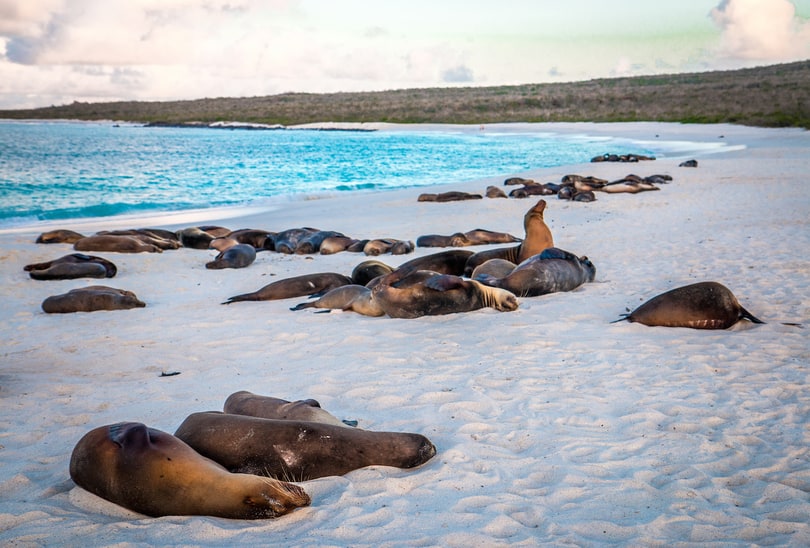




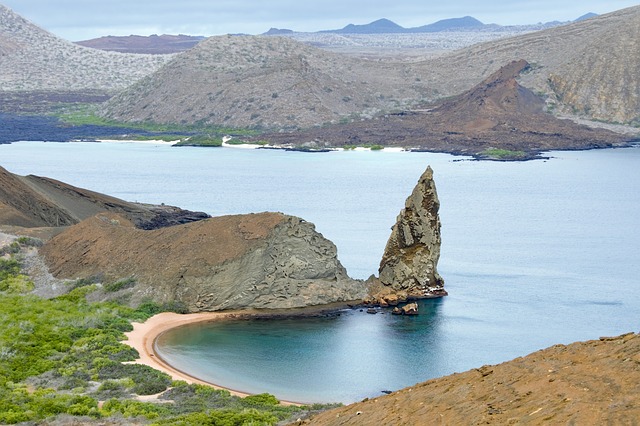

 A poca distanza da Amangiri, raggiungibile sia in macchina che con una escursione, Camp Sarika è separato dal resto del mondo. Un luogo remoto contraddistinto da un profondo legame con la natura che lo circonda, per concedersi una fuga dalla vita frenetica della città. La struttura offreun ristorante, una piscina principale, una lounge e un paio di spa suite, tutti elementi che rendono Camp Sarika un rifugio completamente indipendente. Il campo è immerso in un paesaggio ultraterreno, circondato da 600 acri di imponenti mesa, canyon e sabbia color ruggine. Il campo tendato regala un'esperienza intima e selvaggia nel cuore del deserto, a poca distanza da cinque parchi nazionali e dalla riserva nazionale Navajo. Un luogo unico, che rappresenta un punto di ingresso alternativo nelle terre selvagge del Vecchio West.
A poca distanza da Amangiri, raggiungibile sia in macchina che con una escursione, Camp Sarika è separato dal resto del mondo. Un luogo remoto contraddistinto da un profondo legame con la natura che lo circonda, per concedersi una fuga dalla vita frenetica della città. La struttura offreun ristorante, una piscina principale, una lounge e un paio di spa suite, tutti elementi che rendono Camp Sarika un rifugio completamente indipendente. Il campo è immerso in un paesaggio ultraterreno, circondato da 600 acri di imponenti mesa, canyon e sabbia color ruggine. Il campo tendato regala un'esperienza intima e selvaggia nel cuore del deserto, a poca distanza da cinque parchi nazionali e dalla riserva nazionale Navajo. Un luogo unico, che rappresenta un punto di ingresso alternativo nelle terre selvagge del Vecchio West.  Under Canvas, società specializzata in lussuosi alloggi in stile safari nei parchi nazionali americani, nel 2020 si prepara ad inaugurare la prima località di glamping nella zona di Yosemite. Situato a sole due ore e mezzo di macchina a est della baia di San Francisco e a 20 minuti dall’ingresso del Parco Nazionale di Yosemite, il sito di glamping si erge su un’area di 85 acri tra alberi di sequoia e prati sconfinati. La location nella Contea di Tuolumne offrirà 90 tende in stile safari e aree lounge tendate, rappresentando la scelta perfetta per i viaggiatori avventurosi che desiderano esplorare i luoghi imperdibili di Glacier Point, Half Dome ed El Capitan.
Under Canvas, società specializzata in lussuosi alloggi in stile safari nei parchi nazionali americani, nel 2020 si prepara ad inaugurare la prima località di glamping nella zona di Yosemite. Situato a sole due ore e mezzo di macchina a est della baia di San Francisco e a 20 minuti dall’ingresso del Parco Nazionale di Yosemite, il sito di glamping si erge su un’area di 85 acri tra alberi di sequoia e prati sconfinati. La location nella Contea di Tuolumne offrirà 90 tende in stile safari e aree lounge tendate, rappresentando la scelta perfetta per i viaggiatori avventurosi che desiderano esplorare i luoghi imperdibili di Glacier Point, Half Dome ed El Capitan. Grazie alla luce delicata e alle fronde degli alberi che offrono l’ombra perfetta per rinfrescarsi dal caldo di Miami, questa casa sull’albero offre agli ospiti un’esperienza di autentico relax in un ambiente che ricorda quello di un’isola lontana, senza muoversi dal quartiere di Little Haiti. Circondati da capre, maiali, emù, galli e gatti, gli ospiti si sentiranno come trasportati in campagna. Per raggiungere l’alloggio all’interno di questa oasi urbana è necessario arrampicarsi lungo la stretta scala fino al terzo piano della casa, costruita tra i rami di un albero di Pithecellobium, dove si trova anche un bagno all’aperto in stile Bahamas
Grazie alla luce delicata e alle fronde degli alberi che offrono l’ombra perfetta per rinfrescarsi dal caldo di Miami, questa casa sull’albero offre agli ospiti un’esperienza di autentico relax in un ambiente che ricorda quello di un’isola lontana, senza muoversi dal quartiere di Little Haiti. Circondati da capre, maiali, emù, galli e gatti, gli ospiti si sentiranno come trasportati in campagna. Per raggiungere l’alloggio all’interno di questa oasi urbana è necessario arrampicarsi lungo la stretta scala fino al terzo piano della casa, costruita tra i rami di un albero di Pithecellobium, dove si trova anche un bagno all’aperto in stile Bahamas Tende a tema cowgirl, piastrelle luminose e pareti giallo brillante fanno da cornice a questo Airstream dallo stile retrò, immerso tra centinaia di olmi a Smith Creek, nel cuore del Texas Hill Country. È il luogo perfetto per fare una doccia all’aperto, brindare in gruppo intorno ad un falò o rilassarsi nelle vasche idromassaggio sotto le scintillanti lucine della sera. Inoltre, il segnale telefonico non è sempre garantito, quindi gli ospiti possono davvero sfruttare la posizione remota per andare “offline” e godersi il panorama stupendo fatto di colline, insenature, bagni e percorsi naturalistici che offrono un detox perfetto dalla vita frenetica. Il vicino Pedernales Falls State Park è ideale per una nuotata o un’escursione all’aperto.
Tende a tema cowgirl, piastrelle luminose e pareti giallo brillante fanno da cornice a questo Airstream dallo stile retrò, immerso tra centinaia di olmi a Smith Creek, nel cuore del Texas Hill Country. È il luogo perfetto per fare una doccia all’aperto, brindare in gruppo intorno ad un falò o rilassarsi nelle vasche idromassaggio sotto le scintillanti lucine della sera. Inoltre, il segnale telefonico non è sempre garantito, quindi gli ospiti possono davvero sfruttare la posizione remota per andare “offline” e godersi il panorama stupendo fatto di colline, insenature, bagni e percorsi naturalistici che offrono un detox perfetto dalla vita frenetica. Il vicino Pedernales Falls State Park è ideale per una nuotata o un’escursione all’aperto. I viaggiatori possono sperimentare la vita dei cowboy nelle pianure del Montana, negli Stati Uniti nord-occidentali, al Resort at Paws Up. Gli ospiti possono prenotare una delle capanne di legno di questa tenuta di ben 37.000 acri, con ranch in attività, ma sono le tende spaziose e appartate i posti più speciali in cui soggiornare. La scelta è tra quelle arroccate sul bordo di una scogliera, con vista sul turbinoso fiume Blackfoot (che per dieci miglia scorre attraverso la proprietà) ed Elk Creek, circondato da alberi imponenti. Gli interni sono in stile western-chic, con giroletti in legno, stampe vivaci e vasche da bagno in rame, che donano quel tocco di lusso anche alla vacanza in campeggio. Nella sezione privata del ranch, sono presenti delle tende di glamping con vista su prati e montagne. Il luogo ospita inoltre numerosi workshop sulla natura selvaggia che spaziano da lezioni di pittura e sessioni di fotografia del cielo, a pesca con la mosca, escursioni e passeggiate a cavallo. Da qui è possibile esplorare la regione del fiume Blackfoot, passeggiando tra le foreste di conifere e lungo pianure vuote, ammirando gli splendidi paesaggi della natura selvaggia del Montana
I viaggiatori possono sperimentare la vita dei cowboy nelle pianure del Montana, negli Stati Uniti nord-occidentali, al Resort at Paws Up. Gli ospiti possono prenotare una delle capanne di legno di questa tenuta di ben 37.000 acri, con ranch in attività, ma sono le tende spaziose e appartate i posti più speciali in cui soggiornare. La scelta è tra quelle arroccate sul bordo di una scogliera, con vista sul turbinoso fiume Blackfoot (che per dieci miglia scorre attraverso la proprietà) ed Elk Creek, circondato da alberi imponenti. Gli interni sono in stile western-chic, con giroletti in legno, stampe vivaci e vasche da bagno in rame, che donano quel tocco di lusso anche alla vacanza in campeggio. Nella sezione privata del ranch, sono presenti delle tende di glamping con vista su prati e montagne. Il luogo ospita inoltre numerosi workshop sulla natura selvaggia che spaziano da lezioni di pittura e sessioni di fotografia del cielo, a pesca con la mosca, escursioni e passeggiate a cavallo. Da qui è possibile esplorare la regione del fiume Blackfoot, passeggiando tra le foreste di conifere e lungo pianure vuote, ammirando gli splendidi paesaggi della natura selvaggia del Montana Avventurose e pronte a tutto, si, ma con femminilità!
Avventurose e pronte a tutto, si, ma con femminilità!






 Calza a pennello per i nostri viaggi avventurosi questa collezione dalla femminilità leggera e aggraziata. Dall’altro lato, rigore e ricerca di uno stile trasformista. La pre-collezione SS21 di Flapper ha una doppia natura. Mostrarsi e distinguersi ma anche coprirsi e proteggersi. In condizioni di meteo avverso come di vulnerabilità.
Calza a pennello per i nostri viaggi avventurosi questa collezione dalla femminilità leggera e aggraziata. Dall’altro lato, rigore e ricerca di uno stile trasformista. La pre-collezione SS21 di Flapper ha una doppia natura. Mostrarsi e distinguersi ma anche coprirsi e proteggersi. In condizioni di meteo avverso come di vulnerabilità.


 HOLIDAY KIT by Susanne Kaufmann : I formati travel di alcuni tra i prodotti più amati del brand skincare racchiusi in un inedito kit ideale per il nostro viaggio americano.In formato travel, prodotti idratanti, rigeneranti e per proteggersi dal sole. Analogamente a tutte le referenze del brand skincare, sono formulati e prodotti nelle Alpi austriache avvalendosi dei più efficaci attivi botanici.Perfetto per essere portato con sé in vacanza , Susanne Kaufmann Holiday Kit include infatti le praticissime travel size di prodotti che idratano e rinnovano la pelle dopo l’esposizione al sole, così come uno spray antibatterico per le mani, la cui azione detergente non lede l’idratazione delle estremità. In particolare il kit comprende:Moisturizing Mask. Maschera idratante dalla texture ultra piacevole, nutre la pelle grazie alla presenza dell’olio di nocciola e dell’estratto di viola del pensiero. La pelle appare ridefinita, la freschezza è ripristinata.Lip Balm. Oli e cere vegetali nutrono e proteggono le labbra a lungo.Hand Spray Purif-i sanitizing. Spray che rimuove i germi dalle mani grazie all’alcol vegetale, mentre principi attivi derivanti da arnica e dalle proteine della seta nutrono la pelle.Body Broad Spectrum Protection Sunscreen SPF 25. Crema solare protettiva per il corpo. Rinforza la barriera protettiva naturale della pelle ed è waterproof. La formulazione idrata intensamente e apporta un nutrimento longlasting.After Sun Gel moisturizing. Gel doposole che contiene l’innovatico complesso di acido ialuronico CUBE³, dall’intensa azione idratante. L’aloe vera protegge dai danni causati dai fattori ambientali e ha un effetto rinfrescante e lenitivo sulle scottature solari.Rose Water Mist. Spray rinfrescante per il viso, vera e propria fonte di freschezza ogniqualvolta se ne senta l’esigenza. Ha un effetto antiossidante e lenitivo, donando al contempo alla pelle un aspetto sano e riposato. Il delicato profumo di rosa aggiunge piacevolezza ulteriore per il corpo e per l’anima.
HOLIDAY KIT by Susanne Kaufmann : I formati travel di alcuni tra i prodotti più amati del brand skincare racchiusi in un inedito kit ideale per il nostro viaggio americano.In formato travel, prodotti idratanti, rigeneranti e per proteggersi dal sole. Analogamente a tutte le referenze del brand skincare, sono formulati e prodotti nelle Alpi austriache avvalendosi dei più efficaci attivi botanici.Perfetto per essere portato con sé in vacanza , Susanne Kaufmann Holiday Kit include infatti le praticissime travel size di prodotti che idratano e rinnovano la pelle dopo l’esposizione al sole, così come uno spray antibatterico per le mani, la cui azione detergente non lede l’idratazione delle estremità. In particolare il kit comprende:Moisturizing Mask. Maschera idratante dalla texture ultra piacevole, nutre la pelle grazie alla presenza dell’olio di nocciola e dell’estratto di viola del pensiero. La pelle appare ridefinita, la freschezza è ripristinata.Lip Balm. Oli e cere vegetali nutrono e proteggono le labbra a lungo.Hand Spray Purif-i sanitizing. Spray che rimuove i germi dalle mani grazie all’alcol vegetale, mentre principi attivi derivanti da arnica e dalle proteine della seta nutrono la pelle.Body Broad Spectrum Protection Sunscreen SPF 25. Crema solare protettiva per il corpo. Rinforza la barriera protettiva naturale della pelle ed è waterproof. La formulazione idrata intensamente e apporta un nutrimento longlasting.After Sun Gel moisturizing. Gel doposole che contiene l’innovatico complesso di acido ialuronico CUBE³, dall’intensa azione idratante. L’aloe vera protegge dai danni causati dai fattori ambientali e ha un effetto rinfrescante e lenitivo sulle scottature solari.Rose Water Mist. Spray rinfrescante per il viso, vera e propria fonte di freschezza ogniqualvolta se ne senta l’esigenza. Ha un effetto antiossidante e lenitivo, donando al contempo alla pelle un aspetto sano e riposato. Il delicato profumo di rosa aggiunge piacevolezza ulteriore per il corpo e per l’anima.




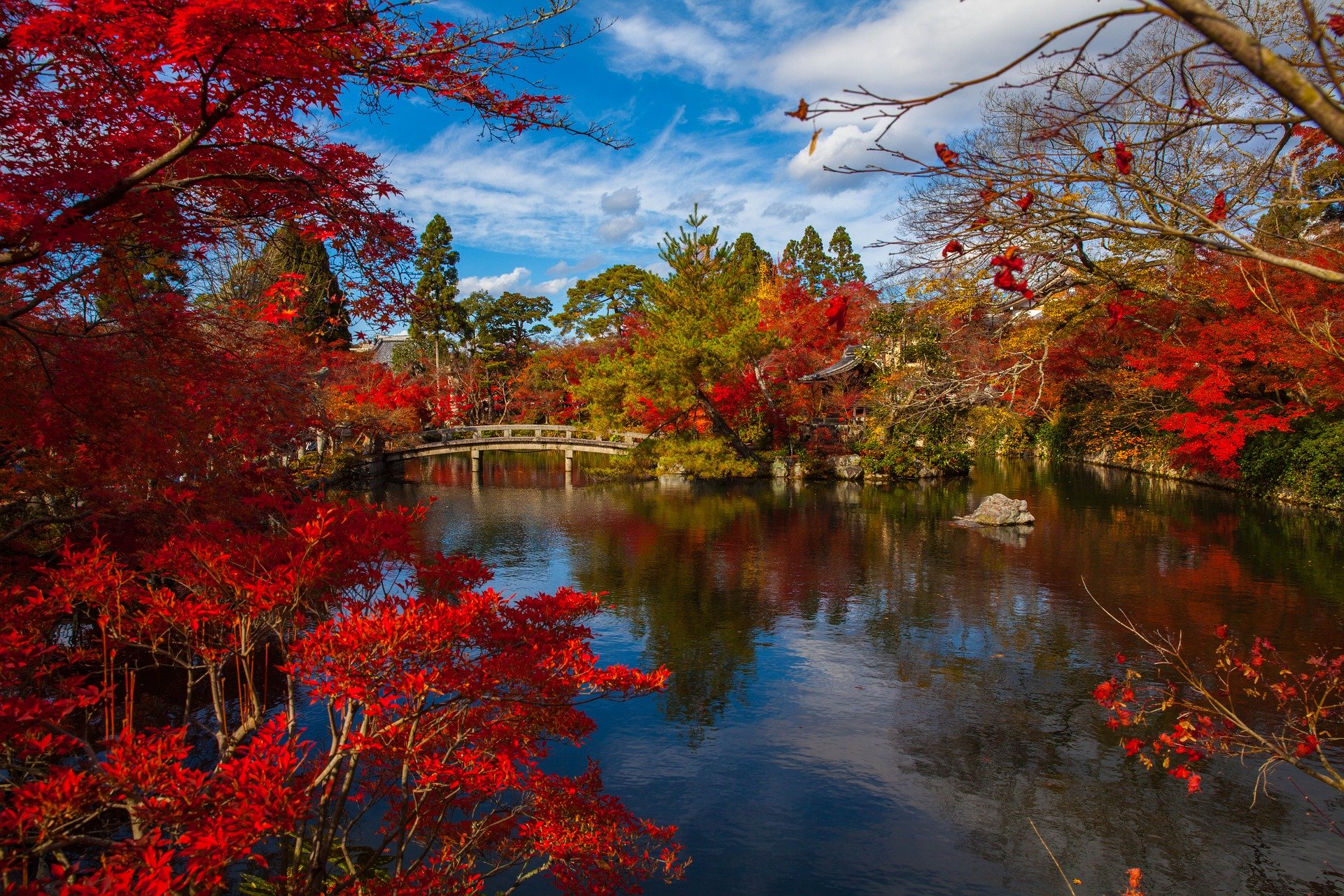

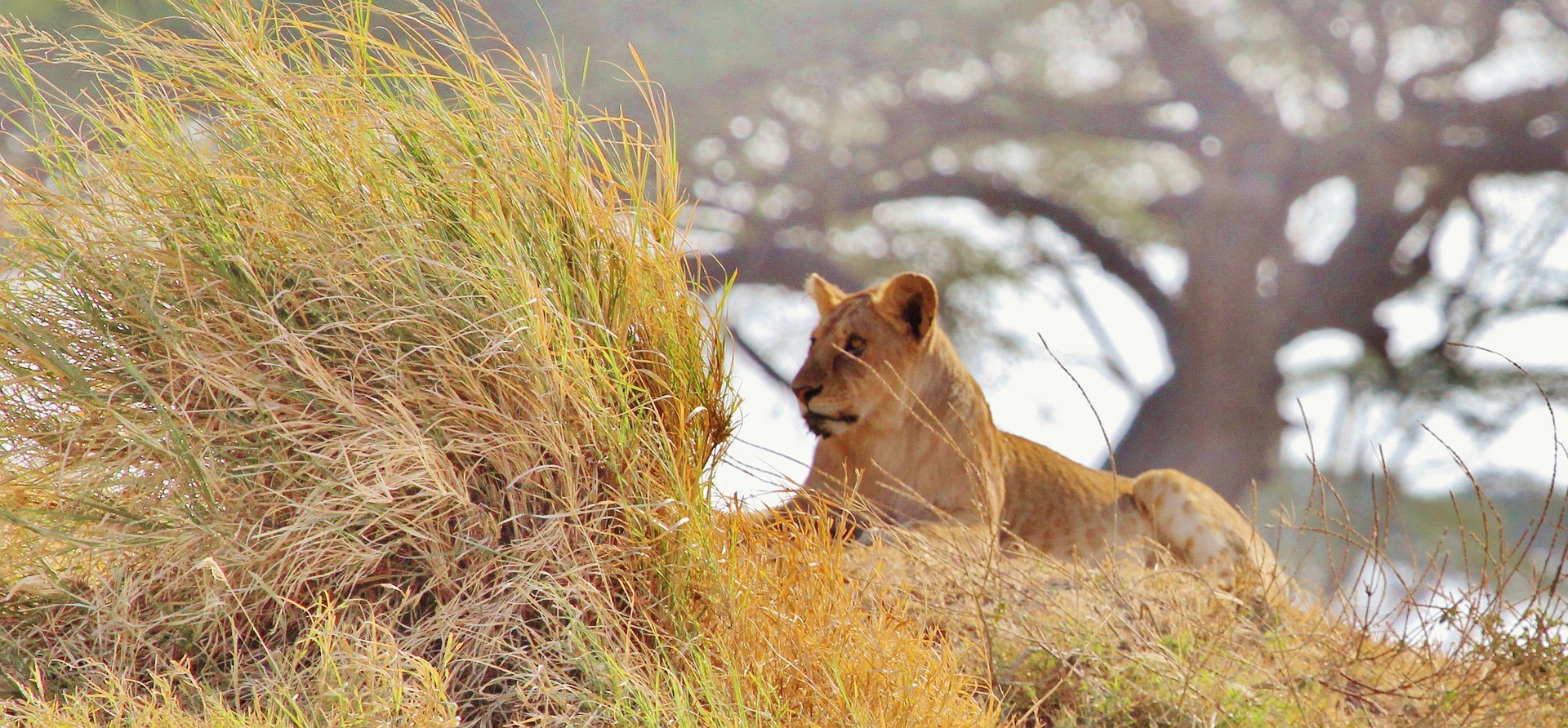
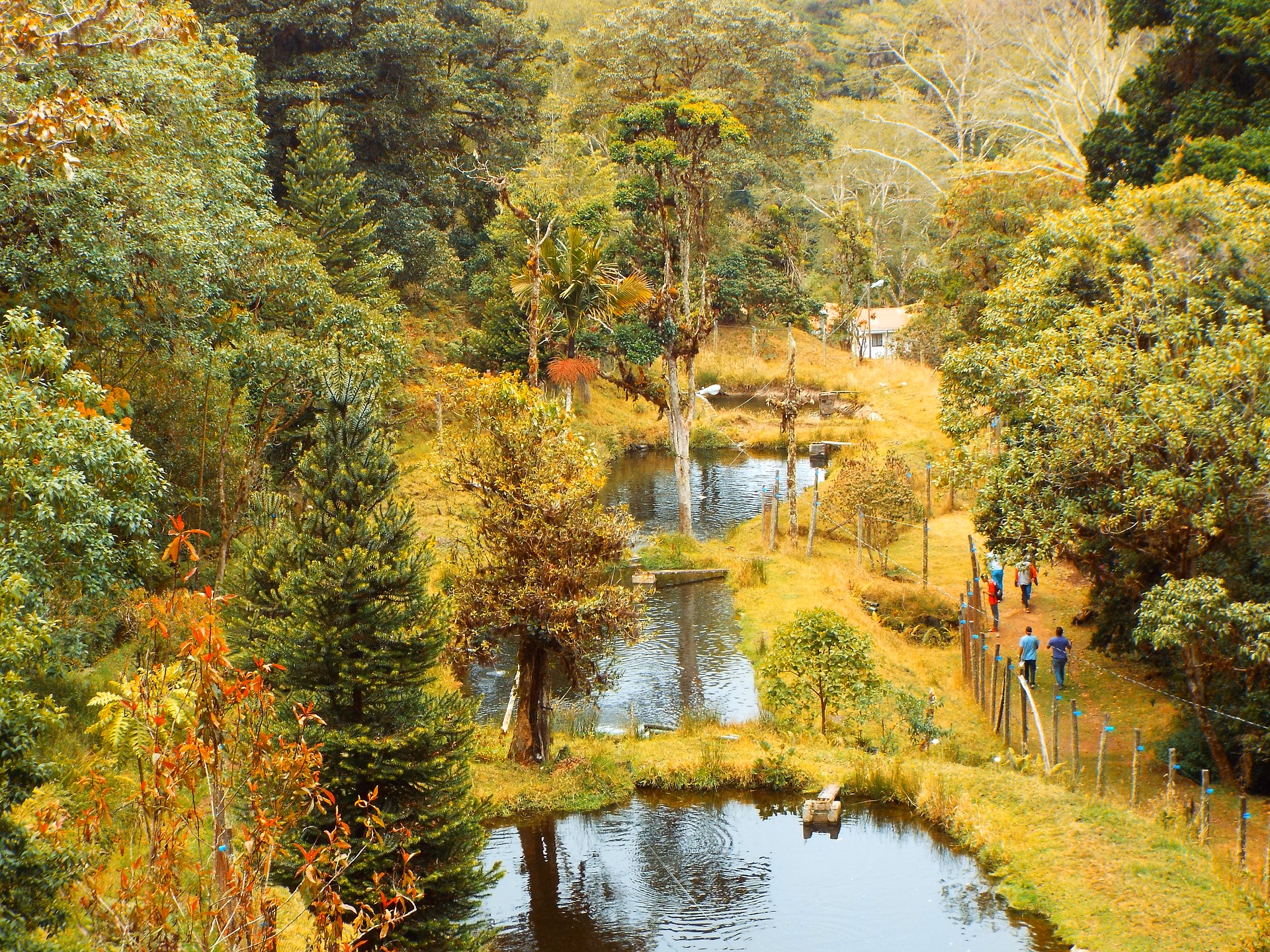

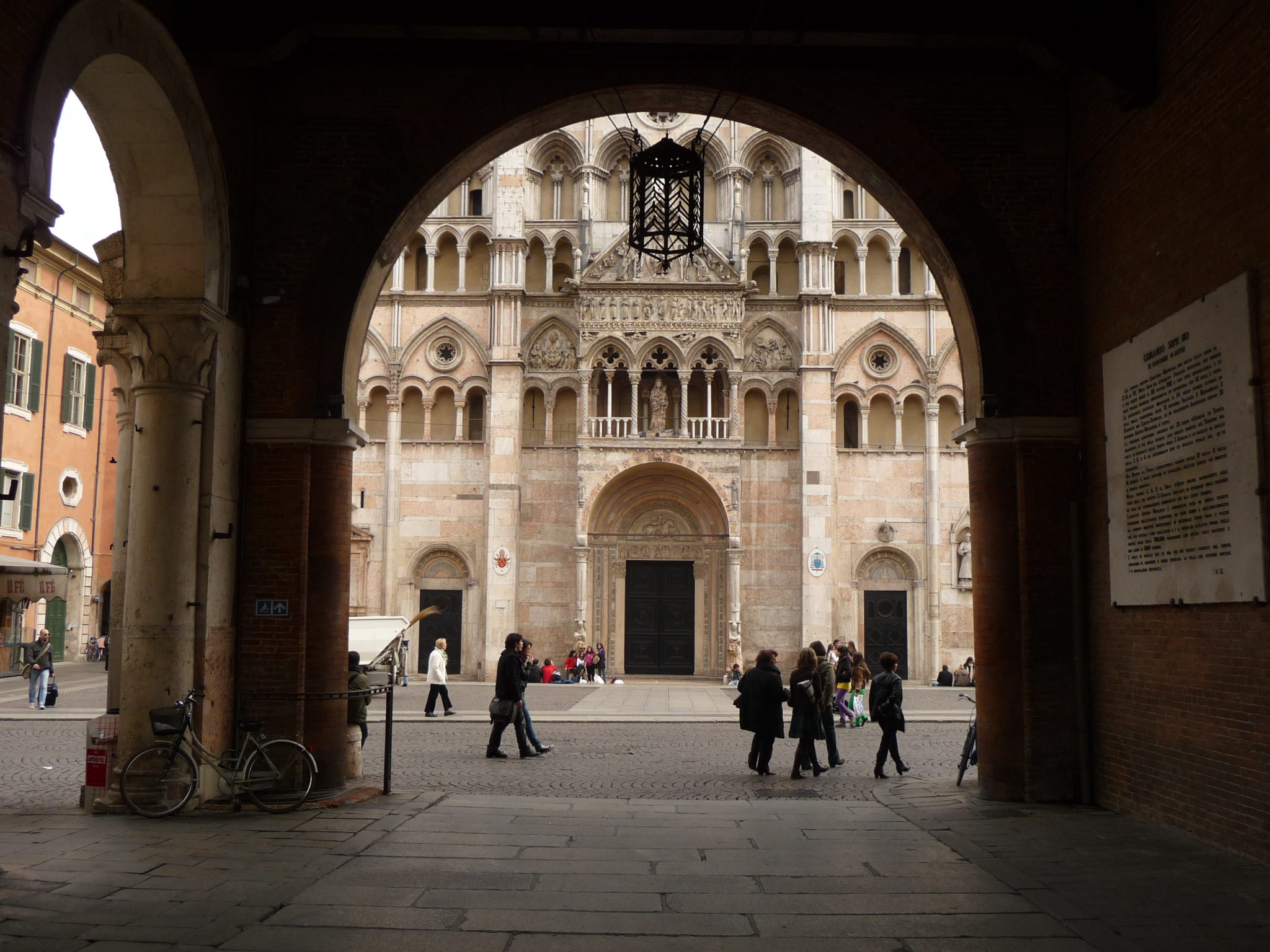

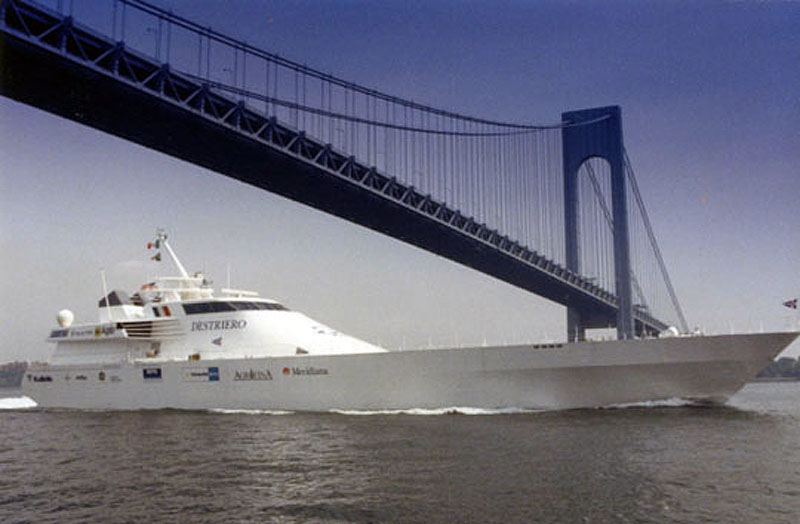



 almeno quanto il sole. Con una testardaggine particolare a sud, dove le infinite spiagge di Jandia sono – non a caso – il ritrovo mondiale di windsurf e kite. Bellissimi da vedere, le centinaia di vele sul mare, e chi ci sta sopra. Va meglio a nord, dove le migliaia di dune (magiche!) che punteggiano le Grandes Playas di Corralejo offrono un prezioso riparo dal vento.
almeno quanto il sole. Con una testardaggine particolare a sud, dove le infinite spiagge di Jandia sono – non a caso – il ritrovo mondiale di windsurf e kite. Bellissimi da vedere, le centinaia di vele sul mare, e chi ci sta sopra. Va meglio a nord, dove le migliaia di dune (magiche!) che punteggiano le Grandes Playas di Corralejo offrono un prezioso riparo dal vento.